 |
 |
 |
 |
 |
 |
 |
 |
 |
 |
|
KICP News
|
KICP in the News, 2016
Chicago Tonight: Katrin Heitmann speaks about 3-D simulations of the evolution of the universe Chicago Tonight, January 4, 2016 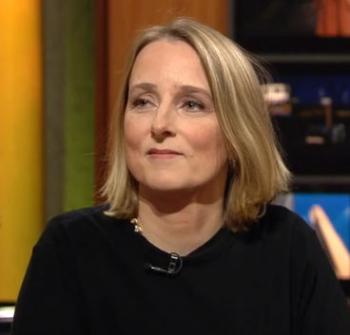 Argonne National Lab Simulation Tracks the Evolution of the Universe Scientists at Argonne National Laboratory recently ran one of the most complex simulations of the evolution of the universe ever created. The purpose: To try and understand how the universe came to be and, in particular, to understand the mysterious influence of dark energy and dark matter - which makes up some 95 percent of everything - on its development. The lead scientist on the project, Katrin Heitmann, joins us to talk about the big science being conducted just outside of Chicago. What is the scientific value of doing the kinds of cosmological simulations that you do? Katrin Heitmann: "First of all, what we want to understand in cosmology is the evolution of the universe - how it got to where it is today - as well as the make-up of the universe - what's in it. In order to do that we are running very large surveys that basically map out the distribution of galaxies across the sky in a 3-D map. We have a certain understanding about the universe. We have understanding about the initial conditions and we have an understanding of how it evolved and an understanding of its make-up. What we want to do now with these simulations is exactly create this universe in our lab. So we build this model and we put it on a computer and evolve it forward, and now we have created a universe that we can look at and compare it to the real data." Read more >> Related Links: KICP Members: Katrin Heitmann South Pole's next generation of discovery The University of Chicago News Office, January 27, 2016  Later this year, during what passes for summer in Antarctica, a group of Chicago scientists will arrive at the Amundsen-Scott South Pole research station to install a new and enhanced instrument designed to plumb the earliest history of the cosmos. It will have taken the combined efforts of scientists, engineers, instrument builders, and computer experts at UChicago, Argonne National Laboratory, Fermilab, as well as institutions across the world that participate in the South Pole Telescope collaboration. "It's a really technically challenging scientific project," says Fermilab Director Nigel Lockyer, "and you couldn't do it without the national labs' expertise and enabling technical infrastructure." Led by John Carlstrom, the S. Chandrasekhar Distinguished Service Professor in Astronomy and Astrophysics, the South Pole Telescope is a global collaboration of more than a dozen institutions. It probes the cosmic microwave background -- the radiation that remains from the Big Bang -- for insight into how the universe has evolved and the processes and particles that have participated in that evolution. "The collaboration lets us do more than what we could ever do otherwise. We've cultivated the ability to have a single group of 20 or 30 people. ... There's a critical mass, intellectually, that emerges from that." - Clarence Chang Argonne National Laboratory physicist "The physics of the early universe was imprinted into patterns in the cosmic microwave background that we can measure," says Clarence Chang, who heads Argonne's part of the project -- the design and fabrication of the detectors. "But it is very faint, so we need a very sensitive camera." A new ultra-sensitive camera is both the heart of the telescope and the focal point of the collaboration between Argonne, Fermilab, and Chicago. "UChicago is the scientific lead," says Bradford Benson, an associate scientist and Wilson Fellow at Fermilab who directs the design of the camera and its integration with cryogenics, detectors, and electronics. "Fermilab provides expertise and resources at the integration level: How do we build this thing, package it, and operate it for many years? And Argonne has micro-fabrication resources that aren't available elsewhere." The South Pole Telescope project is one of multiple collaborations among UChicago, Argonne, and Fermilab scientists. Others include experiments that examine the nature of neutrinos; as well as those including future accelerator science and technology. Microwave-sensitive camera The camera on the South Pole Telescope is made of an array of superconducting detectors that are sensitive to the frequencies associated with the CMB. Each requires depositing ultra-thin superconducting materials with dimensions as small as about 10 x 50 microns (50 microns is the approximate width of a human hair). These delicate detectors are built at Argonne, using the state-of-the-art facilities at the Center for Nanoscale Materials and materials developed in the lab's Materials Sciences Division. The new focal plane uses integrated arrays of detectors on 150 mm silicon wafers, with ten of these modules making up the heart of the camera. "They're actually detecting the photons from 14 billion years ago," Chang says. "They heat up the detectors a tiny bit, and then we measure that heat." The finished detector array modules go to Fermilab, where they are packaged and connected with the electronics for testing in the lab's Silicon Detector Facility—a thornier task than it sounds. Each module requires thousands of hair-like wires to be connected individually to cable. Fermilab has specialized wire bonders that are accomplish this task, says Benson. Then the assembly goes to the University of Chicago, where it is tested at a quarter of a degree above absolute zero -- the temperature required for the superconducting detectors to be able to sense the tiny amount of heat from the incoming photons. The test results are then fed back to Argonne for adjustments to be made for the fabrication of the next modules. Ultimately everything winds up back at UChicago, to be integrated into a 2,000-pound camera to ship to the South Pole. The new camera will have 16,000 detectors -- a major upgrade from the 1,600-detector camera currently on the telescope. The scientists will use the increased sensitivity to search for the signature of primordial gravitational waves that an inflationary universe would have generated early in its history. A detection would probe physics at the enormous energies that existed when the universe was only a fraction of a second old -- complementary to the studies at the energy scales of the Large Hadron Collider. The new camera also will enable them to obtain precision measurements that will help determine the mass of neutrinos, so-called ghost particles that were created in huge numbers shortly after the university began and which contribute significantly to its evolution. Instrumentation mass production Making 16,000 of anything isn't something universities typically do. "People are often trying to make one device, understand the physics of it, and publish a paper on it," says Benson. "We're trying to build these instruments that are on a much larger scale, and they need to be mass produced. There's not much of a technical staff or infrastructure at a university to maintain something like that on a five or 10-year time scale. Argonne has built up that expertise. And we can plug into that." Chang, Benson, and Carlstrom have collaborated on the SPT project for more than a decade. They have worked to create as seamless a process as possible so that scientists, postdocs, and students can go back and forth between groups with no bureaucratic barriers. Both Chang and Benson have part-time appointments at the University, which helps. "The collaboration lets us do more than what we could ever do otherwise," says Chang. "We've cultivated the ability to have a single group of 20 or 30 people. You'll never have a group in a university or at either of the labs that is that big. There's a critical mass, intellectually, that emerges from that. I think that's the biggest thing that we get out of this. And that's something that's hard to find elsewhere, either at other labs or at other universities." Although the new telescope isn't yet installed at the South Pole, the project partners are already looking ahead to the next, more sensitive telescope. "A project the size of the fourth-generation South Pole Telescope requires grand collaborations," said Argonne Director Peter Littlewood. "In order to build, install, and operate an instrument with half a million sensors, we are investing in a multi-institution combination of strong project management and state-of-the-art physical infrastructure to create something truly extraordinary for science." Read more >> Related Links: KICP Members: Bradford A. Benson; John E. Carlstrom; Clarence L. Chang; Jason Gallicchio Scientific projects: South Pole Telescope (SPT) Chicago Scientists Prepare Ultra-Sensitive Camera for South Pole Telescope Chicago Tonight, February 4, 2016 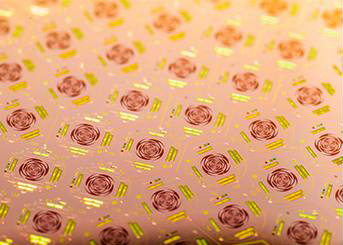 Scientists at the University of Chicago are hoping a new, highly sensitive camera they're developing for the South Pole Telescope will unravel mysteries of our early universe. The telescope is the largest in Antarctica (it's nearly 33 feet in diameter) and was completed in 2007. The new camera will be the telescope's third and it’ll be a significant upgrade from its predecessor, but more on that later. Exploring the Cosmos This isn't the same kind of telescope you might use to observe constellations or planets in the night sky. The South Pole Telescope's purpose is to observe and measure radiation left over from the Big Bang. Following the logic of the Big Bang theory, the universe began in a hot, dense state far different from the sea of stars and galaxies we see today. Instead, the universe was a primordial soup of high-energy radiation and particles. Over time, the universe cooled and expanded, allowing atoms to form from particles and letting electromagnetic radiation fill the universe as light. From here, about 380,000 years after the Big Bang, this radiation - known as the cosmic microwave background (CMB) – spread throughout the universe while the matter, under the force of gravity, began to form structures that led to the galaxies we see today. The South Pole Telescope's camera measures this radiation, which contains the earliest imprints of our universe and dates back nearly 14 billion years, making it the oldest light in the universe. Through observation, scientists are hoping to better determine how the universe evolved from the period immediately after the Big Bang to present day. Data may also suggest how the universe will continue to develop. But the CMB's light is very faint and dispersed, so it requires an extra-sensitive camera. The University of Chicago is working closely with Argonne National Laboratory and Fermilab, along with scientists from over 20 institutions, to construct and eventually install the new camera, SPT-3G, which is four times heavier than the camera it will replace. It also contains 10 times as many superconducting detectors, which are sensitive to the photons of light emitted from the CMB. These extra-thin detectors are not commercially available, so Argonne is delicately fabricating them at their Center for Nanoscale Materials. It's a process rife with challenges, as University of Chicago astrophysicist John Carlstrom explains. "The signals we're looking at are so weak," said Carlstrom, who leads the South Pole Telescope Project. "So we have to make sure the detectors are super quiet or noise generated by them will throw us off." Carlstrom says there are no cameras in the field today with more than one or two thousand detectors - theirs will contain 16,000. If everything goes as planned, the only noise that should interfere with the camera's measurements will be from the sky. Read more >> Related Links: KICP Members: John E. Carlstrom; Clarence L. Chang Scientific projects: South Pole Telescope (SPT) Scientists find ripples in fabric of spacetime The University of Chicago News Office, February 11, 2016 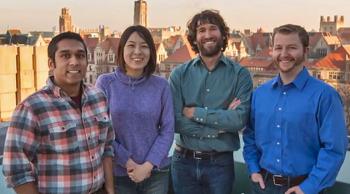 UChicago physicists say discovery of gravitational waves opens new universe of possibilities Early on the morning of Sept. 14, 2015, two detectors separated by about 1,800 miles made the first observation of ripples in the fabric of spacetime, ushering in an entirely new way of studying the universe. The discovery of gravitational waves by the Laser Interferometer Gravitational-Wave Observatory, announced in Washington, D.C. on Feb. 11 by leaders of the international collaboration, fulfills a century-old scientific quest. Albert Einstein's 1915 theory of general relativity predicted that cataclysmic cosmic events would produce gravitational waves that could be detected from Earth. University of Chicago physicists played an important role in determining that the LIGO detectors had detected gravitational waves from the merger of two black holes, which collided to form a more massive, spinning black hole. Three UChicago physicists are among the many co-authors of the study detailing the discovery, which has been accepted for publication in the journal Physical Review Letters. "We've been dreaming about this for a long time. It's our first time ever seeing something like this, and it truly opens up a new chapter in physics." -Daniel Holz Associate professor in physics and LIGO collaborator For scientists at UChicago, the finding speaks powerfully to their field's past and its exciting future. "We've been dreaming about this for a long time," said LIGO collaborator Daniel Holz, associate professor in physics. "It's our first time ever seeing something like this, and it truly opens up a new chapter in physics. You don’t get to do that very often." In addition to providing the first observation of ripples in spacetime, the discovery is a dramatic confirmation that black holes are real, Holz said. "The physics community was convinced, but we've never seen one up close," he said. "Now we're going right to the heart of these objects, from a billion light years away. These measurements leave little doubt that black holes exist." Legendary UChicago physicist Subrahmanyan Chandrasekhar was the first to propose in 1930 that massive stars might collapse into objects like black holes - an idea that prominent physicists initially ridiculed. As important as it is to validate the theories of Einstein and Chandrasekhar, the LIGO findings do much more than that, said Edward "Rocky" Kolb, dean of UChicago's Physical Sciences Division. "This opens up a new window into the universe, to understand the most violent events that happen," Kolb said. "We're in a great position at the University of Chicago to exploit this new opportunity. Using instruments like the Magellan Telescopes in Chile and the future Giant Magellan Telescope, in which UChicago is a founding partner, we will try to see the fireworks that should accompany what we've just heard through gravitational waves." 'Mind-blowingly extreme' cosmic events Holz’s UChicago collaborators on the LIGO project are Ben Farr, a McCormick Fellow in the Enrico Fermi Institute, and graduate students Hsin-Yu Chen and Zoheyr Doctor. Together, they played a significant role in analyzing the signals to help characterize the source of the gravitational waves, which cause ripples in the fabric of spacetime. LIGO detects this warping of space using laser interferometers, which are sensitive to minute changes in the length of the cavities that the lasers travel through. "The detector tells you when it sees wiggles - the two detectors, although separated by thousands of miles, wiggle in a predictable way at almost the same time," Holz said. "That tells you there must have been a gravitational wave event. Then you try to understand what produced the wiggles." The Sept. 14 event was so intense that in the moment before the colliding black holes swallowed each other, they emitted more energy than the entire rest of the universe combined. By studying the LIGO data over a period of months, Holz's team contributed to the international effort to calculate the properties of the black hole collision, such as the mass of the black holes, how far away they are and where they happened in the sky. Holz previously had written papers suggesting that LIGO analysts should be on the lookout for collisions of two black holes, since they should produce waves strong enough and frequently enough to be observed on Earth. The scale of the cosmic smash-up that LIGO observed is almost unimaginable, Holz said. "Most black holes have masses in the range of our sun, but these two are significantly more massive," Holz said. "Each black hole compresses 30 suns into an object that's about one hundred miles across, and they crash into each other at almost the speed of light. It's just mind-blowingly extreme." The team also has played a key role in testing how well the colliding black holes match what relativity theory predicts. "Does this agree with the predictions of Einstein or are there some little differences? We're trying to help address that question," Holz said. "The short answer is that our observations agree perfectly with Einstein's theory, which is quite remarkable." For the UChicago team, the feeling post-discovery is almost bittersweet, Holz said, because "there's an awareness that it's such a unique moment. It's so thrilling, so intense, so revolutionary." Yet collaborators are excited about the next phase of discovery. With continuing upgrades to the detectors' sensitivity, the detection of gravitational waves should become commonplace. "This is a completely new way of doing astronomy," Holz said. "Traditional telescopes enhance our sight, but gravitational waves are a lot like sound - a sound that actually ripples through spacetime. Up until now, we've been deaf to the universe. Now we're hearing it for the first time." Read more >> Related Links: KICP Members: Ben Farr; Daniel E. Holz; Edward W. Kolb KICP Students: Hsin-Yu Chen; Zoheyr Doctor Scientific projects: Laser Interferometer Gravitational-wave Observatory (LIGO) Gravitational Waves Discovery Confirms Einstein's Theory Here and Now, February 19, 2016 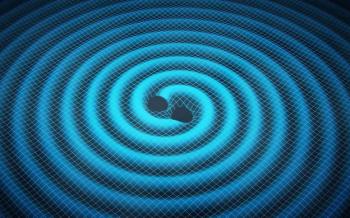 Einstein was right: gravitational waves do exist. Scientists confirmed Einstein's theory with the groundbreaking discovery, announced today at the National Press Club, that gravitational waves were detected after a collision of a pair of unusual black holes. Michael Turner, a professor of astronomy and astrophysics and director of the Kavli Institute for Cosmological Physics at the University of Chicago, speaks with Here & Now's Jeremy Hobson about what this discovery tells us about our understanding of the universe. Interview Highlights: Michael Turner What exactly did scientists discover here? "I would call this a Galileo moment. The big news today is that 1.3 billion years ago, in a galaxy far, far away, two black holes collided and coalesced to form one black hole, and they twisted and bent and roiled and contorted space-time and that started a ripple, a really big ripple. You would not have wanted to be in that ripple. That ripple traveled 1.3 billion light years to us and it was detected by the gravitational wave detectors in Livingston, Louisiana and in Hanford, Washington that were built by the NSF back in 1992." On the detection centers in Louisiana and Washington "This ripple in space-time causes the distance between the end points of the gravitational wave detector, which are four kilometers apart, to change by less than a thousandth the size of the proton." Which means? "10-16 centimeters, if you really want it. But it's amazing that human beings can build instruments to do that, and in this new way we look at the universe, the brightest things, and the things that are the easiest to see, are really exotic things." Give us a sense of what this means for our understanding of the universe. How do we feel today versus yesterday about what's around us? "I think number one is, Einstein's theory passed the last major test. That's a big one. These are black holes. In general relativity these are the simplest objects; they have the strongest fields and, I'm going to use a slightly technical term here, the waveform that was detected. When you plot the results, they look and see if the waveform agrees with what Einstein’s theory says for two black holes coming together, and it does. So this is a big boost to our understanding of black holes, and then of course I think the final really big one that’s so amazing is that advanced LIGO, they will have earned their 'O.' So Laser Interferometer Gravitational-Wave Observatory, so they’re going to be seeing tens of events per year." So now that we can observe these waves, we can learn much more about them? "That's right. So the rest of the year there are going to be 10 more events, some of them will be black holes coalescing, some of them will be a black hole leading a neutron star, and the ones that every scientist is so excited about are the surprises, where you go 'Oh my god, what is that? We never calculated that. What's that thing?' So it's the surprises and every time we've turned our eyes on the universe with a new kind of instrument, x-rays or microwaves, the most important discovery is not the one we said, 'Oh yeah, we're gonna do this one for sure,' it's the big surprise. People are very excited for what surprises lie ahead." Is this the most exciting moment of your scientific career? "I've been very lucky. Dark matter, dark energy, inflation, this has just been a very exciting time in our understanding of the universe. I have to tell you about a meeting that took place, I spoke at it, in 1965. Before 1965 you could have said, 'Oh, we live in a pretty boring universe. We've got these ordinary starts and this and that.' 1965 is kind of when this revolution began, the discovery of the microwave background that told us about the Big Bang. The discovery of quasars, which turned out to be objects powered by black holes followed by neutron stars. We live in this amazing universe in which stars like our sun are very ordinary and we have all these exotic objects that we're studying and inspiring the next generation of scientists with." Read more >> Related Links: KICP Members: Michael S. Turner Scientific projects: Laser Interferometer Gravitational-wave Observatory (LIGO) Young women learn that not even sky is limit in STEM careers Chicago Tribune, February 24, 2016  Fighting roadblocks is key for women who want to reach success in STEM fields, panelists said Monday at The Chicago Network's Panel on Space. "We all run into difficulties, but with guys, something is wrong with the test or with the professor or something else, but women internalize it. They say 'I can't do it,'" said Wendy Freedman, an astronomy professor at the University of Chicago. Freedman was a principal investigator on the Hubble Space Telescope Key Project and also founding chairman of the Giant Magellan Telescope Organization, dedicated to building a massive telescope to see 20 million times what a human eye can. Freedman was one of three panelists who spoke to an audience of 150 Girls Scouts, other middle- and high school-age girls, and members of The Chicago Network. "I remember a high school teacher of mine once said, 'This is too technical, the girls don't have to listen,'" Freedman said. "At university, someone told me that girls belong in the kitchen. We all run into difficulties, but don't give up. Perseverance is critical." Freedman was joined by Northwestern University's Vicky Kalogera and the University of Chicago's Angela Olinto. The three women spoke about overcoming difficulties as well as the science they've been working on. "To have the opportunity to share this with the younger generation is important. I know peer pressure is intense to move girls away from science and math, and I know there are not a lot of role models," Kalogera said. "It would have been amazing for me, when I was young, to meet a grown-up scientist and to have a discussion with them and hear from them." Kalogera is an astrophysicist who worked on the recent discovery of gravitational waves in the universe, which confirmed part of Einstein's Theory of Relativity. She is interested in the interaction of compact objects within binary systems, in which two stars orbit each other. She also is the director of the Center for Interdisciplinary Exploration and Research in Astrophysics at Northwestern. Kalogera told students about her work in astrophysics in addition to discussing the difficulties she has faced along the way, from receiving a 60 percent on her first test in college to trying to balance being a mother of two and working on her career today. Angela Olinto studies ultra-high-energy cosmic rays, which aren't well-understood. To study these rays, Olinto is leading the U.S. collaboration to send a cosmic ray telescope to the International Space Station. The project, however, has faced many roadblocks. "We have the device; we just need a ride there," Olinto said. She encouraged the young women in the audience to diversify their lives, because other smaller tasks help get you through the day: "I do a lot more than just build telescopes," Olinto said, who also has a passion for music and is a professor at the University of Chicago. The panel, moderated by Michelle Larson, CEO of Adler Planetarium, provided examples of what women could do with a STEM education. "Our girls have big dreams about the future, but are unsure about what is out there for them," said Karissa Dewey, troop leader of the Highland Middle School Girl Scouts of Highland, Ind. "Bringing them into the city and introducing them to women in science and technology, they were absolutely floored." Read more >> Related Links: KICP Members: Wendy L. Freedman; Angela V. Olinto Scientific projects: Giant Magellan Telescope (GMT) TCN Panel on Space: Wendy Freedman and Angela Olinto The Chicago Network, April 1, 2016 
If you can't see it, you won't be it. Future women leaders need examples. In that spirit, The Chicago Network recently gathered an audience of young women and Network members to hear from four of the world’s foremost astrophysicists - all Network members - to demonstrate the tremendous impact women are making in STEM and the possibilities that lie ahead for the next generation. Young scientists left feeling energized by the program moderated by Adler Planetarium President and CEO Michelle Larson, and ready to take on the challenge of studying even the most profound universal mysteries. According to Michelle, panelists Wendy Freedman, Vicky Kalogera, and Angela Olinto illustrate more than an exploration of the universe in this program, they demonstrate what it is to discover your own individual capacity for leadership: The panelists in this program take us on a journey through the Universe, and provide inspiration through their life stories. You will hear about measuring the age and size of the Universe, probing current mysteries like dark energy and dark matter, and opening a new observational era with the discovery of gravitational waves. As you take this journey, also listen for the words passion, people, and perseverance - all play an important role in their success. Finally, listen for the number of times you hear these women say "I led" or "I lead." These panelists are amazing leaders, and each of them is certain you could be too. What a great endorsement of your potential - run with it! - Michelle Larson, President and CEO, Adler Planetarium Read more >> Related Links: KICP Members: Wendy L. Freedman; Angela V. Olinto Scientific projects: Giant Magellan Telescope (GMT); Pierre Auger Observatory (AUGER) Michael Turner discusses LIGO & the detection of gravity waves STEM-Talk, April 12, 2016 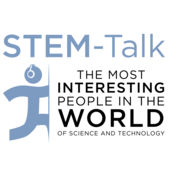 Michael Turner is best known for having coined the term "dark energy" in 1998. A theoretical cosmologist at the University of Chicago, Turner has dedicated his career to researching the Big Bang, dark energy and dark matter. He wrote his Ph.D. thesis on gravitational waves - back in 1978 - and nearly four decades later had a bird's eye view of their recent discovery. Turner was assistant director of the National Science Foundation (NSF), which funded the development of LIGO, which stand for the Laser Interferometer Gravitational-Wave Observatory. This large-scale physics experiment and observatory, which was led by researchers at MIT and CalTech, discovered, on September 15th, 2015, the existence of gravitational waves via a chirping noise signaling the collision of two black holes a billion light-years away. The scientists announced their discovery on February 11th, 2016. In this episode, Turner interprets this momentous finding, and talks about some of the big player scientists who worked on LIGO. Read more >> Related Links: KICP Members: Michael S. Turner Scientific projects: Laser Interferometer Gravitational-wave Observatory (LIGO) 526th Convocation Address: John Carlstrom - "Our Expanding View Of The Universe" The University of Chicago, April 14, 2016 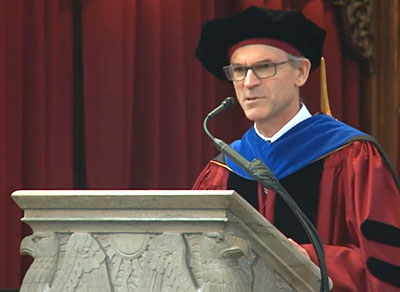 The University Ceremony of the 526th Convocation of the University of Chicago was held on March 18, 2016, in Rockefeller Memorial Chapel. Provost Eric D. Isaacs introduced Subrahmanyan Chandrasekhar Distinguished Service Professor, Professor in the Departments Of Astronomy & Astrophysics and Physics, Enrico Fermi Institute, and the College John Carlstrom, who delivered the Convocation Address, "Our Expanding View Of The Universe." Related Links: KICP Members: John E. Carlstrom Prof. Wendy Freedman suggests standard model of measuring speed of universe's expansion may be incorrect Nature, April 14, 2016 by Davide Castelvecchi, Nature Another possibility is that standard candles themselves that are not reliable when it comes to precision measurements, says Wendy Freedman, an astronomer at the University of Chicago in Illinois who in 2001 led the first precision measurement of the Hubble constant3. She and her team are working on an alternative method based on a different class of stars. Read more >> Related Links: KICP Members: Wendy L. Freedman Cosmic Speed Measurement Suggests Dark Energy Mystery Scientific American, April 17, 2016 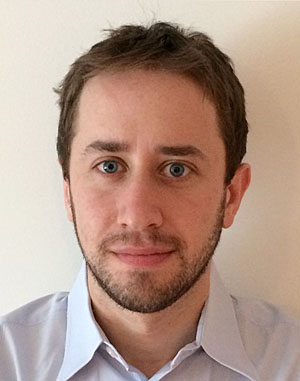 The Hubble constant measurement from the early universe, on the other hand, comes from observations of the cosmic microwave background (CMB) light that is left over from the big bang and pervades the entire sky. Researchers studied patterns in the CMB and extrapolated to modern times, based on the best known cosmological laws, to arrive at the Hubble constant. The best observations to date of the CMB were made by the European Space Agency's Planck satellite, whose data puts the universe's expansion rate at 67.3, plus or minus 0.7, kilometers per second per megaparsec. "Before, there were these hints of tension in the two measurements," says Dan Scolnic of the University of Chicago, a member of Riess' team. "Now both our team and the Planck team have reanalyzed and those hints have become something stronger. We have this alarm bell that there really could be something more going on. This may be the biggest tension now in cosmology." The latest result is also in good agreement with other measurements of the Hubble constant based on similar distance ladder measurements, such as a 2012 study led by Wendy Freedman of the University of Chicago. "I think it's interesting that they’ve increased their sample size and the result is essentially unchanged," Freedman says. "This is spectacular progress to be at this point, but actually making a definitive measurement at this level requires independent methods. How this will ultimately resolve is really too early to say." Freedman is leading an effort to perform the same calculation using another type of cosmic yardstick - RR Lyrae variable stars - in place of Cepheids. Read more >> Related Links: KICP Members: Wendy L. Freedman; Daniel M. Scolnic Experiment probes nature of space and time UChicago News, April 19, 2016 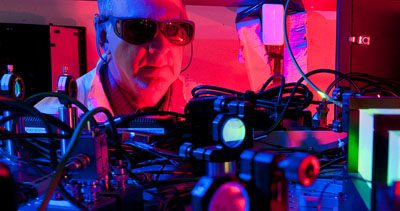 For the past year at Fermilab, an instrument called the Holometer has been probing the fundamental nature of space. The experiment uses an array of lasers and mirrors to try and answer the question, "If you look at the infinitesimally small scale, is space smooth and unbroken - the way we experience it in everyday life - or is it pixelated like the image on a TV screen?" Recent initial results are homing in on an answer. Either way, the outcome will have important consequences for physical theory. It may even help address one of the most nagging problems in physics: how to reconcile Einstein's General Theory of Relativity with quantum mechanics. The Holometer is an anomaly - an experiment in a scientific territory in which there are no other experiments. Craig Hogan, professor of astronomy and physics at UChicago and head of Fermilab's Center for Particle Astrophysics, envisioned the Holometer as a way to probe the zone where quantum mechanics and general relativity might come together. General relativity describes space-time and gravitation in the large-scale world we inhabit. It makes definite predictions. Quantum mechanics describes the world at the atomic and sub-atomic scale, which is not continuous but granular, or quantized. It deals in probabilities, uncertainties, and there is a limit to the amount of information that can be had about anything being observed. It has other stranger qualities as well, such as the fact that distant parts of a quantum system can be influenced by each other - a phenomenon that Einstein pejoratively dismissed as "spooky action at a distance." "In a way, for me, this thing has already succeeded exactly as we hoped, because it's guiding theory." - Prof. Craig Hogan Head of Fermilab's Center for Particle Astrophysics The problem is getting from one scale to the other. In the canonical way of doing science, theory makes predictions, experiments test those predictions, and experimental results inform the next iteration of theory. But in the domain of quantum gravity, there is no experimental evidence at all. In fact, there is no real theory - only competing models. "Many of these ideas are great ideas," says Hogan. "It's just that people don't know which ones apply to reality. And there's no experiment to guide them." That's where the Holometer comes in. Its mission is to look for "holographic noise" - an effect of quantum uncertainty in our 3D universe. Hogan's idea is that if space itself were quantized at the Planck scale, our apparently continuous space could emerge from it in much the same way that fluid, apparently continuous air emerges from the bouncing around of discrete molecules. But some of the strange quantum behavior should "leak out" from the Planck domain into our large-scale world. And that leakage is what the Holometer is designed to detect. It is exploring and measuring space at the Planck scale - something that has never been done before. The search for quantum jitter Measurable holographic noise could take a couple of different forms - quantum jitter or purely rotational quantum twists of space. Recently, the Holometer definitively eliminated the first possibility: There is no quantum jitter in space. News media around the world reported that the finding means there is "no evidence that the universe is a hologram," but Hogan says the work's broader significance is the window it opens into phenomena at the Planck scale. "That's an important result," Hogan says. "It sets a limit on something nature could have been doing. The other part of the news is that we have this technique now that works." The technique involves a version of a tool used in physics since 1887: a Michelson interferometer, named for the former UChicago physicist and Nobel laureate Albert A. Michelson. Actually, the experiment isn’t one interferometer but two identical instruments set close together. Each comprises two perpendicular 40-meter arms, each with a mirror at the end, that intersect at a beam-splitting mirror. Laser light sent through the beam splitter splits, half going down one arm and half down the other. Both beams are reflected back through the beam splitter, where they recombine, or interfere. If there had been a quantum jitter in space at the Planck scale, the relative positions of the mirrors would have shifted ever so slightly, and the jitter would have shown up as a tiny offset in the interference pattern. Using two instruments that share the same slice of space-time makes it possible for the scientists to exploit the quantum mechanical phenomenon of correlation to help them tease out any sign of jitter. "If you have two interferometers next to each other, the space in one is correlated with the other," says Hogan. "So if one moves, the other moves with it even if there's no physical connection." The two instruments are shielded from ambient sources of jiggle and isolated from one another so that no light can move between them. "They really had to be independent systems," says Stephan Meyer, professor in astronomy and astrophysics and physics who designed most of the Holometer's electronic and mechanical systems. "If you have two devices and all of the jiggling that they would normally do is not related, you can use a mathematical technique that sniffs out the part where they move together." Related Links: KICP Members: Craig J. Hogan; Stephan S. Meyer Joshua Frieman elected to American Academy of Arts and Sciences UChicago News, April 26, 2016 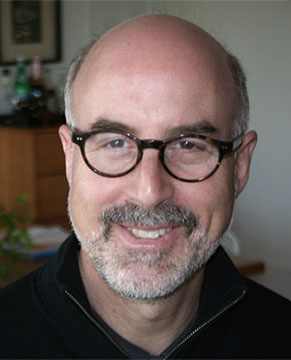 Joshua Frieman is a professor of astronomy & astrophysics and the College. He is also a member of the Kavli Institute for Cosmological Physics at UChicago and a member of the theoretical astrophysics group at Fermi National Accelerator Laboratory. He focuses his research on theoretical and observational cosmology, including studies of the nature of dark energy, the early universe, gravitational lensing, the large-scale structure of the universe and supernovae as cosmological distance indicators. Frieman is a co-founder and director of the Dark Energy Survey, an international collaboration of more than 300 scientists from 25 institutions on three continents that investigates why the expansion of the universe is accelerating. The collaboration built a 570-megapixel camera for the four-meter Blanco Telescope at the Cerro Tololo Inter-American Observatory in Chile to conduct its observations. Previously Frieman led the Sloan Digital Sky Survey Supernova Survey, which discovered more than 500 type Ia supernovae for cosmological studies. Frieman is an honorary fellow of the Royal Astronomical Society, and a fellow of the American Physical Society and of the American Association for the Advancement of Science. Read more >> Related Links: KICP Members: Joshua A. Frieman Scientific projects: Dark Energy Survey (DES) Physics in your future: Brittany Kamai APS, Women in Physics, May 2, 2016 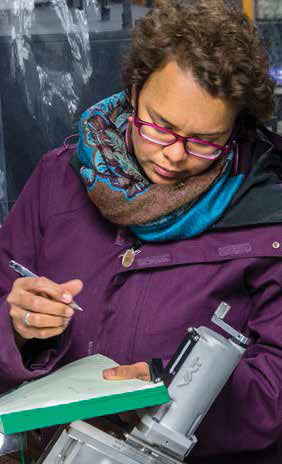 When Brittany Kamai took her first astronomy class as a freshman at the University of Hawaii, her professor told her that we can only see about 4% of the stuff in the universe. The rest is made of mysterious substances called dark matter and dark energy. "I found it fascinating that in the entire textbook for our class, there was barely a paragraph about this crazy thing," she recalls. Inspired, Brittany decided to study physics. During the summer before her last year of college, she accepted an opportunity to do research at the Institute for Astronomy at the University of Hawaii. She was hooked. Brittany went on to join the Fisk-Vanderbilt Master's-to-PhD Bridge Program, a two-year program designed to help students with limited undergraduate research experience. She is now in the PhD program at Vanderbilt University in Tennessee. But she actually spends most of her time in Chicago, because her research is based at Fermilab, a large U.S. Department of Energy research facility in northern Illinois. Brittany is building what she calls "the world's most precise ruler" - also called a "holometer." She and her colleagues hope to use intersecting laser beams to measure space itself very precisely, so they can look for tiny differences between what they measure and what Einstein's theory of general relativity predicts about it. Brittany and her colleagues are now testing the machine and making it as accurate as possible. They have just begun to run their experiment and hope to have results very soon. She will soon finish graduate school, but plans to continue pursuing experimental research in astrophysics. She likes the variety of work she gets to do. "Sometimes it's nice to say OK, I don't have to go into the lab, I can be behind my computer," she says. "And sometimes it's like, I'm sick of this - let me go back in lab! I enjoy that." When Brittany's not doing science, she's often talking about it, and encouraging young people - especially girls - to pursue it. She sees this as an important part of her job. In the past five years, she has shared her enthusiasm for science at museums, at middle schools and high schools, and even at senior centers. "You talk to people who are 50-plus, they get super-jazzed about it, they tell their kids, their grandkids," she says. "And it's like yes! This is how you get people excited about science." Read more >> Related Links: KICP Members: Stephan S. Meyer KICP Students: Brittany Kamai Prof. Michael Turner's May 5 lecture at Adler Planetarium to be simulcast nationally UChicago News, May 5, 2016 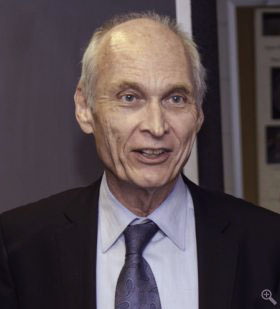 Prof. Michael Turner will explore some of the biggest mysteries of modern cosmology in a 7:30 p.m. May 5 lecture at the Adler Planetarium. The cosmologist's Kavli Fulldome Lecture, titled "From the Big Bang to the Multiverse and Beyond," will be streamed live at 15 other institutions across North America. Kavli Fulldome Lecture Is the universe part of a larger multiverse? What is speeding up the expansion of the universe? Turner will address these and other mysteries that inspire modern cosmologists. His talk will stream live simultaneously at 15 other institutions across North America. This dome-cast will allow audiences across North America to immerse themselves in the live presentation and ask questions, and will include institutions like the American Museum of Natural History in New York City, the Pacific Science Center in Seattle and the H.R. MacMillan Space Centre in Vancouver, British Columbia. A theoretical astrophysicist, Turner is the Bruce V. and Diana M. Rauner Distinguished Service Professor and director of its Kavli Institute for Cosmological Physics. Turner helped to pioneer the interdisciplinary field of particle astrophysics and cosmology. He has made seminal contributions to the current cosmological paradigm known as LambdaCDM, including the prediction of cosmic acceleration. Turner has received numerous prizes and is a member of the National Academy of Sciences. Current list of institutions participating in the dome-cast:
Read more >> Related Links: KICP Members: Michael S. Turner Wendy Freedman Named 2016 Woman in Space Science UChicago News, May 23, 2016 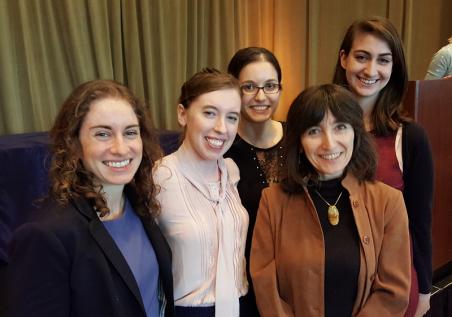 On Thursday, May 12, Chicago's Adler Planetarium presented the 2016 Women in Space Science Award to Wendy L. Freedman, the John & Marion Sullivan Professor of Astronomy & Astrophysics. The annual Women in Space Science Award recognizes women who have made significant contributions to the fields of science, technology, engineering, and math (STEM) with the goal of inspiring young women to pursue careers in these disciplines. Following a luncheon and her keynote address, Professor Freedman joined approximately 250 young women from Chicago-area public schools for a series of engaging STEM workshops. One of Professor Freedman's many achievements was initiating the Giant Magellan Telescope (GMT) Project and serving as chair of the board of directors from its inception in 2003 until 2015. The Division of the Physical Sciences joins the Adler in celebrating Wendy's accomplishments and looking forward to the amazing discoveries that await her and the GMT. Read more >> Related Links: KICP Members: Wendy L. Freedman Scientific projects: Giant Magellan Telescope (GMT) Gravitational waves detected from second pair of colliding black holes UChicago News, June 16, 2016 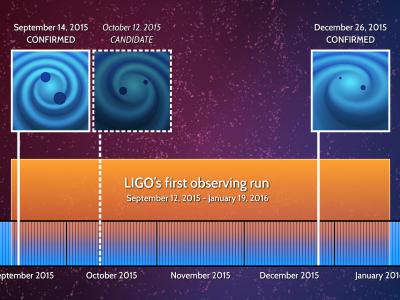 Illustration by LIGO Collaboration At 9:38:53 CST on Dec. 25, 2015, scientists observed gravitational waves - ripples in the fabric of spacetime - for the second time. The gravitational waves were detected by both of the twin Laser Interferometer Gravitational-Wave Observatory detectors, located in Livingston, La., and Hanford, Wash. University of Chicago scientists led by Daniel Holz, assistant professor in physics and astronomy, are members of the LIGO collaboration. The LIGO observatories are funded by the National Science Foundation, and were conceived, built and are operated by the California Institute of Technology and the Massachusetts Institute of Technology. The discovery, accepted for publication in the journal Physical Review Letters, was made by the LIGO Scientific Collaboration and the Virgo Collaboration using data from the two LIGO detectors. The LIGO detectors operated for approximately four months late last year, yielding about 50 days of data. An analysis of the first 16 days of data yielded the event that the LIGO Collaboration announced in February 2016. Black holes events "Now we’ve analyzed the rest of the data, and we have another event that’s particularly interesting," Holz said. "It's not quite as loud as the first one, but it's quite beautiful in its own way. The event is composed of smaller black holes, and at least one is spinning. This marks the official turning point from 'detector' to 'observatory.'" Gravitational waves carry information about their origins and about the nature of gravity that cannot otherwise be obtained, and physicists have concluded that these gravitational waves were produced during the final moments of the merger of two black holes - 14 and 8 times the mass of the sun - to produce a single, more massive spinning black hole that is 21 times the mass of the sun. "It is very significant that these black holes were much less massive than those observed in the first detection," said Gabriela Gonzalez, LIGO Scientific Collaboration spokesperson and professor of physics and astronomy at Louisiana State University. "Because of their lighter masses compared to the first detection, they spent more time - about one second - in the sensitive band of the detectors. It is a promising start to mapping the populations of black holes in our universe." During the merger, which occurred approximately 1.4 billion years ago, a quantity of energy roughly equivalent to the mass of the sun was converted into gravitational waves. The detected signal comes from the last 27 orbits of the black holes before their merger. Based on the arrival time of the signals - with the Livingston detector measuring the waves 1.1 milliseconds before the Hanford detector - the position of the source in the sky can be roughly determined. The first detection of gravitational waves, announced on Feb. 11, 2016, was a milestone in physics and astronomy: It confirmed a major prediction of Albert Einstein's 1915 general theory of relativity, and marked the beginning of the new field of gravitational wave astronomy. Both discoveries were made possible by the enhanced capabilities of Advanced LIGO, a major upgrade that increases the sensitivity of the instruments compared to the first-generation LIGO detectors, enabling a large increase in the volume of the universe probed. 'With the advent of Advanced LIGO, we anticipated researchers would eventually succeed at detecting unexpected phenomena, but these two detections thus far have surpassed our expectations,' said NSF Director France A. Cordova. "NSF's 40-year investment in this foundational research is already yielding new information about the nature of the dark universe." Advanced LIGO's next data-taking run will begin this fall. By then, further improvements in detector sensitivity are expected to allow LIGO to reach as much as 1.5 to 2 times more of the volume of the universe. The Virgo detector is expected to join in the latter half of the coming observing run. LIGO research is carried out by the LIGO Scientific Collaboration, a group of more than 1,000 scientists from universities around the United States and in 14 other countries. More than 90 universities and research institutes in the LSC develop detector technology and analyze data; approximately 250 students are strong contributing members of the collaboration. Virgo research is carried out by the Virgo Collaboration, consisting of more than 250 physicists and engineers belonging to 19 different European research groups. Read more >> Related Links: KICP Members: Daniel E. Holz Scientific projects: Laser Interferometer Gravitational-wave Observatory (LIGO) Simulations foresee hordes of colliding black holes in observatory's future UChicago News, June 28, 2016 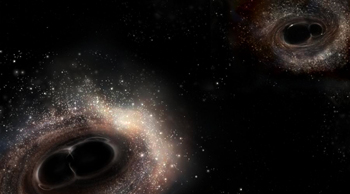 Courtesy of LIGO/A. Simonnet New calculations predict that the Laser Interferometer Gravitational wave Observatory (LIGO) will detect approximately 1,000 mergers of massive black holes annually once it achieves full sensitivity early next decade. The prediction, published online June 22 in the journal Nature, is based on computer simulations of more than a billion evolving binary stars. The simulations are based on state-of-the-art modeling of the physics involved, informed by the most recent astronomical and astrophysical observations. "The main thing we find is that what LIGO detected makes sense," said Daniel Holz, associate professor in physics and astronomy at the University of Chicago and a co-author of the Nature paper. The simulations predict the formation of black-hole binary stars in a range of masses that includes the two already observed. As more LIGO data become available, Holz and his colleagues will be able to test their results more rigorously. The paper's lead author, Krzysztof Belczynski of Warsaw University in Poland, said he hopes the results will surprise him, that they will expose flaws in the work. Their calculations show, for example, that once LIGO reaches full sensitivity, it will detect only one pair of colliding neutron stars for every 1,000 detections of the far more massive black-hole collisions. "Actually, I would love to be proven wrong on this issue. Then we will learn a lot," Belczynski said. Forming big black holes The new Nature paper, which includes co-authors Tomasz Bulik of Warsaw University and Richard O'Shaughnessy of the Rochester Institute of Technology, describes the most likely black-hole formation scenario that generated the first LIGO gravitational-wave detection in September 2015. That detection confirmed a major prediction of Albert Einstein's 1915 general theory of relativity. The paper is the most recent in a series of publications, topping a decade of analyses where Holz, Belczynski and their associates theorize that the universe has produced many black-hole binaries in the mass range that are close enough to Earth for LIGO to detect. "Here we simulate binary stars, how they evolve, turn into black holes and eventually get close enough to crash into each other and make gravitational waves that we would observe," Holz said. The simulations show that the formation and evolution of a typical system of binary stars results in a merger of similar masses, and after similarly elapsed times, to the event that LIGO detected last September. These black hole mergers have masses ranging from 20 to 80 times more than the sun. LIGO will begin recording more gravitational-wave-generating events as the system becomes more sensitive and operates for longer periods of time. LIGO will go through successive upgrades over the coming years, and is expected to reach its design sensitivity by 2020. By then, the Nature study predicts that LIGO might be detecting more than 100 black hole collisions annually. LIGO has detected big black holes and big collisions, with a combined mass greater than 30 times that of the sun. These can only be formed out of big stars. "To make those you need to have low metallicity stars, which just means that these stars have to be relatively pristine," Holz said. The Big Bang produced mainly hydrogen and helium, which eventually collapsed into stars. Forging metals As these stars burned they forged heavier elements, which astronomers call "metals." Those stars with fewer metals lose less mass as they burn, resulting in the formation of more massive black holes when they die. That most likely happened approximately two billion years after the Big Bang, before the young universe had time to form significant quantities of heavy metals. Most of those black holes would have merged relatively quickly after their formation. LIGO would be unable to detect the ones that merged early and quickly. But if the binaries were formed in large enough numbers, a small fraction would survive for longer periods and would end up merging 11 billion years after the Big Bang (2.8 billion years ago), recently enough for LIGO to detect. "That's in fact what we think happened," Holz said. Statistically speaking, "it's the most likely scenario." He added, however, that the universe continues to produce binary stars in local, still pristine pockets of low metallicity that resemble conditions of the early universe. "In those pockets you can make these big stars, make the binaries, and then they'll merge right away and we would detect those as well." Belczynski, Holz and collaborators have based their simulations on what they regard as the best models available. They assume "isolated formation," which involves two stars forming in a binary, evolving in tandem into black holes, and eventually merging with a burst of gravitational wave emission. A competing model is "dynamical formation," which focuses on regions of the galaxy that contain a high density of independently evolving stars. Eventually, many of them will find each other and form binaries. "There are dynamical processes by which those black holes get closer and closer and eventually merge," Holz said. Identifying which black holes merged under which scenario is difficult. One potential method would entail examining the black holes' relative spins. Binary stars that evolved dynamically are expected to have randomly aligned spins; detecting a preference for aligned spins would be clear evidence in favor of the isolated evolutionary model. LIGO is not yet able to precisely measure black hole spin alignment, "but we're starting to get there," Holz said. "This study represents the first steps in the birth of the entirely new field of gravitational wave astronomy. We have been waiting for a century, and the future has finally arrived." Citation: "The first gravitational-wave source from the isolated evolution of two stars in the 40-100 solar mass range," by Krzysztof Belczynski, Daniel E. Holz, Tomasz Bulik, and Richard O’Shaughnessy," Nature, Vol. 534, pp. 512-515, June 23, 2016, doi:10.1038/nature18322. Read more >> Related Links: KICP Members: Daniel E. Holz Scientific projects: Laser Interferometer Gravitational-wave Observatory (LIGO) Angela Olinto: the 114th Congress Hearing - Astronomy, Astrophysics, and Astrobiology Committee on Science, Space and Technology, 114th Congress, July 12, 2016 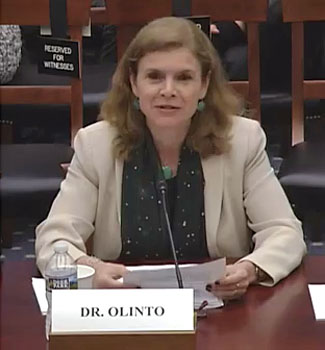 Joint Space Subcommittee and Research and Technology Subcommittee Hearing - Astronomy, Astrophysics, and Astrobiology Tuesday, July 12, 2016 - 10:00am Opening Statements - Space Subcommittee Chairman Brian Babin (R-Texas) - Research and Technology Subcommittee Chairwoman Barbara Comstock (R-Va.) - Chairman Lamar Smith (R-Texas) Witnesses
Read more >> Related Links: KICP Members: Angela V. Olinto Angela Olinto received distinguished service professorship UChicago News, July 21, 2016 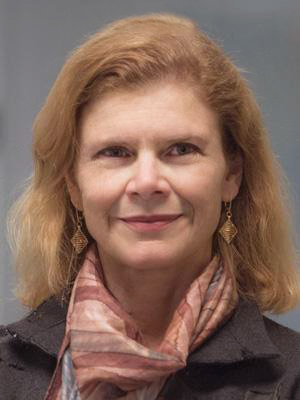 Faculty members recognized with named, distinguished service professorships Ten faculty members have received named professorships or have been named distinguished service professors. Luc Anselin, John R. Birge, John List and Angela Olinto received distinguished service professorships; and Ethan Bueno de Mesquita, Michael Franklin, Christopher Kennedy, Jason Merchant, Haresh Sapra and Nir Uriel received named professorships. Angela Olinto has been named the Homer J. Livingston Distinguished Service Professor in Astronomy & Astrophysics and the College. Olinto has made important contributions to the physics of quark stars, inflationary theory, cosmic magnetic fields and particle astrophysics. Her research interests span theoretical astrophysics, particle and nuclear astrophysics, and cosmology. She has focused much of her recent work on understanding the origins of the highest-energy cosmic rays and neutrinos. Olinto is an elected fellow of the American Association for the Advancement of Science for her distinguished contributions to the field of astrophysics, particularly exotic states of matter and extremely high-energy cosmic ray studies at the Pierre Auger Observatory in Argentina. She now leads the International collaboration of the Extreme Universe Space Observatory mission that will fly in a NASA super pressure balloon in 2017 and will be first to observe tracks of ultra-energy particles from above. She also is a fellow of the American Physical Society and has received the Chaire d’Excellence Award of the French Agence Nationale de Recherche. Olinto has received the Llewellyn John and Harriet Manchester Quantrell Award for Excellence in Undergraduate Teaching, as well as the Faculty Award for Excellence in Graduate Teaching and Mentoring. Olinto joined the UChicago faculty in 1996. Read more >> Related Links: KICP Members: Angela V. Olinto The Particle That Wasn't The New York Times, August 8, 2016 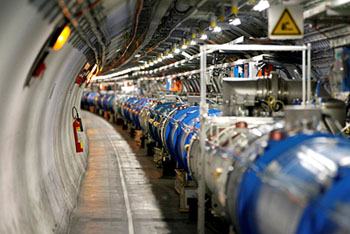 Credit Pierre Albouy/Reuters A great "might have been" for the universe, or at least for the people who study it, disappeared Friday. Last December, two teams of physicists working at CERN's Large Hadron Collider reported that they might have seen traces of what could be a new fundamental constituent of nature, an elementary particle that is not part of the Standard Model that has ruled particle physics for the last half-century. A bump on a graph signaling excess pairs of gamma rays was most likely a statistical fluke, they said. But physicists have been holding their breath ever since. If real, the new particle would have opened a crack between the known and the unknown, affording a glimpse of quantum secrets undreamed of even by Einstein. Answers to questions like why there is matter but not antimatter in the universe, or the identity of the mysterious dark matter that provides the gravitational glue in the cosmos. In the few months after the announcement, 500 papers were written trying to interpret the meaning of the putative particle. On Friday, physicists from the same two CERN teams reported that under the onslaught of more data, the possibility of a particle had melted away. "We don't see anything," said Tiziano Camporesi of CERN, the European Organization for Nuclear Research and a spokesman for one of the detector teams known as C.M.S., on the eve of the announcement. "In fact, there is even a small deficit exactly at that point." His statement was echoed by a member of the competing team, known as Atlas. James Beacham, of Ohio State University, said, "As it stands now, the bumplet has gone into a flatline." The new results were presented in Chicago at the International Conference of High Energy Physics, ICHEP for short, by Bruno Lenzi of CERN for the Atlas team, and Chiara Rovelli for their competitors named for their own detector called C.M.S., short for Compact Muon Solenoid. The presentations were part of an outpouring of dozens of papers from the two teams on the results so far this year from the collider, all of them in general agreement with the Standard Model. The main news is that the collider, which had a rocky start, exploding back in 2008, is now running "swimmingly" in CERN's words, producing up to a billion proton-proton collisions a second. "We're just at the beginning of the journey," said Fabiola Gianotti, CERN’s director-general, in a statement. Michael Turner, a cosmologist at the University of Chicago, said, "Energy is the great tool of discovery, so going from 8 TeV to 13 TeV is a really big deal. Keep your fingers crossed." Read more >> Related Links: KICP Members: Michael S. Turner Allusionist 41: Getting Toasty theallusionist.org, August 22, 2016 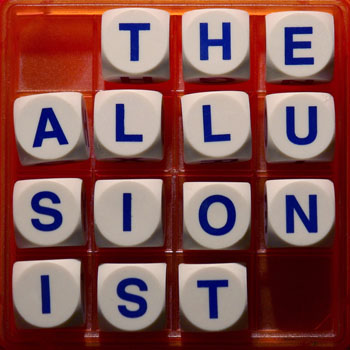 When you choose to spend the winter in Antarctica, you'll be prepared for it to be cold. You know that nobody will be leaving or arriving until springtime. And you're braced for months of darkness. But a few weeks after the last sunset, you might find you can't even string a sentence together. And even if you can, that sentence may only make sense in Antarctica. To explain why are Antarctica veteran Allison 'Sandwich' Barden, endocrinologist Tom Baranski, and astrophysicists Amy Lowitz and Christine Moran, reporting from the South Pole in the depths of winter. Read more >> Related Links: Scientific projects: South Pole Telescope (SPT) James W. Cronin, Nobel laureate and pioneering physicist, 1931-2016 UChicago News, August 27, 2016 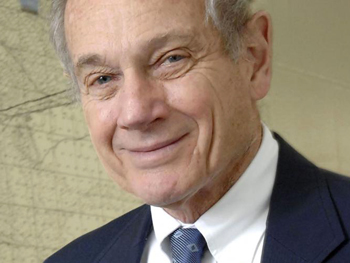 Scholar remembered for groundbreaking research on particle physics and cosmic rays James W. Cronin, a pioneering scientist who shared the Nobel Prize in physics in 1980 for his groundbreaking work on the laws governing matter and antimatter and their role in the universe, died Aug. 25 in Saint Paul, Minn. He was 84. Cronin, SM'53, PhD'55, spent much of his career at the University of Chicago, first as a student and then a professor. A University Professor Emeritus of Physics and Astronomy & Astrophysics, he was remembered this week as a mentor, collaborator and visionary. "He inspired us all to reach further into the unknown with deep intuition, solid scientific backing and poetic vision," said Angela Olinto, the Homer J. Livingston Distinguished Service Professor in Astronomy and Astrophysics. "He accepted his many recognitions and accolades with so much humility that he encouraged many generations to follow his vision." Edward "Rocky" Kolb, dean of the Physical Sciences Division and the Arthur Holly Compton Distinguished Service Professor in Astronomy and Astrophysics, described Cronin as “a person of real honesty and integrity who was a mentor and friend to so many people." "Just like in basketball, there are good players in science, but the greatest players are the ones who make the people around them better. Jim was that great player," Kolb said. Cronin's research that resulted in the Nobel Prize came in 1964 while he was working with Val Fitch at the Brookhaven National Laboratory. The two scientists, who were Princeton University professors at the time, observed the first example of nature's preference for matter over antimatter. Without the phenomenon, which physicists refer to as charge-parity violation, no matter would exist in the universe. Cronin and Fitch studied the short-lived subatomic particles that appeared after the collision of accelerated protons and the nucleus of an atom. They observed indirect charge-parity violation, which is the unbalanced mixing of neutral subatomic kaon particles with their charged antiparticles. Called the Fitch-Cronin effect, the finding showed that some physical laws are violated when the direction of time is reversed. It also lent support for the big bang theory of the universe's origin. Cronin later in his career shifted his focus, becoming co-leader of the Pierre Auger Project. The $50 million international collaboration of 250 scientists across 16 nations focused on the mysterious sources of rare but extremely powerful cosmic rays that periodically bombard Earth. The project led to the creation of the Auger Observatory, which consists of a vast array of cosmic-ray detectors in Argentina. "It was 25 years ago since Jim and I first conceived the idea of what became the Auger Collaboration. It was definitely a great partnership as we drummed up financial and scientific support for the collaboration," said Alan Watson, emeritus professor of physics at the University of Leeds and a fellow of the Royal Society. The collaboration has made definitive measurements on the energy spectrum of cosmic rays, on the patterns of their arrival directions, and on their mass compositions. It also has conducted particle physics research, measuring phenomena that far exceed the energies of the Large Hadron Collider. "It's been an outstanding success, and it's still going strong," Watson said. Drawing inspiration from Fermi Cronin was born on Sept. 29, 1931, in Chicago, while his father was a graduate student in classical languages and literatures at the University of Chicago. The younger Cronin received a bachelor's from Southern Methodist University in 1951 before returning to the University of Chicago as a National Science Foundation Fellow to earn his master's and doctoral degrees. Cronin met his first wife, Annette Martin, while both were students at the University. She died in 2005, and Cronin married Carol McDonald (nee Champlin) in late 2006. Cronin began his scientific career at Brookhaven before becoming a member of the physics faculty at Princeton in 1958. In 1971, he joined the University of Chicago, where he was appointed the University Professor of Physics. He became University Professor Emeritus of Physics and Astronomy & Astrophysics in 1997. Cronin shared a birthdate with Prof. Enrico Fermi, who earned the Nobel Prize in Physics in 1938. Cronin, who knew Fermi from his graduate school days at UChicago, organized a symposium in 2001 to mark the 100th anniversary of Fermi's birth, and was editor of the resulting book, Fermi Remembered. It included contributions from seven Nobel Prize recipients and many other scientists who studied under or worked with Fermi at UChicago. "What's significant about Fermi is if you look through his career, he never just did the same thing. He kept moving on to new scientific challenges," Cronin once said of Fermi. The same statement also could be applied to Cronin and his research shift from high-energy physics to ultra-high-energy cosmic rays. Cronin's honors include the University of Chicago Alumni Medal (2013), election as a foreign member of the Royal Society of London (2007), Distinguished Graduate Award of SMU's Dedman College (2004), Legion d’honneur of France (2001), National Medal of Science (1999), University of Chicago's Quantrell Award for Excellence in Undergraduate Teaching (1994), Laureate of Lincoln Academy of Illinois (1981), Ernest Lawrence Memorial Award for outstanding contributions in the field of atomic energy (1977), John Price Wetherill Medal of the Franklin Institute (1975) and the Research Corporation Award (1968). In 1990 Cronin delivered the Ryerson Lecture, which provides an opportunity each year for a distinguished faculty member to address the UChicago community on significant aspects of his or her research. He was a member of the National Academy of Sciences, American Academy of Arts and Sciences, American Physical Society, American Philosophical Society, Accademia Nazionale dei Lincei of Italy, Mexican Academy of Sciences and the Russian Academy of Sciences. Cronin also had received honorary doctorates from l'Universite Pierre et Marie Curie, University of Leeds, Universite de Franche Conte, Novo Gorica Polytechnique of Slovenia, University of Nebraska, the University of Santiago de Compostela, the Colorado School of Mines, and the Karlsruhe Institute of Technology.. Cronin served as international chair of the College de France in 1999-2000. Cronin is survived by his wife, Carol; daughter, Emily Grothe; son, Daniel Cronin; and six grandchildren: James, Cathryn, Caroline, Meredith, Alex and Marlo. A daughter, Cathryn Cranston, died in 2011. Read more >> Related Links: KICP Members: James W. Cronin; Edward W. Kolb; Angela V. Olinto Scientific projects: Pierre Auger Observatory (AUGER) Physics Confronts Its Heart of Darkness Scientific American, September 1, 2016  Cracks are showing in the dominant explanation for dark matter. Is there anything more plausible to replace it? Physics has missed a long-scheduled appointment with its future - again. The latest, most sensitive searches for the particles thought to make up dark matter - the invisible stuff that may comprise 85 percent of the mass in the cosmos - have found nothing. Called WIMPs (weakly interacting massive particles), these subatomic shrinking violets may simply be better at hiding than physicists thought when they first predicted them more than 30 years ago. Alternatively, they may not exist, which would mean that something is woefully amiss in the underpinnings of how we try to make sense of the universe. Many scientists still hold out hope that upgraded versions of the experiments looking for WIMPs will find them but others are taking a second look at conceptions of dark matter long deemed unlikely. Whatever dark matter is, it is not accounted for in the Standard Model of particle physics, a thoroughly-tested "theory of almost everything" forged in the 1970s that explains all known particles and all known forces other than gravity. Find the identity of dark matter and you illuminate a new path forward to a deeper understanding of the universe - at least, that is what physicists hope. WIMPs would get their gravitational heft from being somewhere between one and a thousand times the mass of a proton. Their sole remaining connection to our familiar world would be through the weak nuclear force, which is stronger than gravity but only active across tiny distances on the scale of atomic nuclei. If they exist, WIMPs should surround us like an invisible fog, their chances of interacting with ordinary matter so remote that one could pass through light-years of elemental lead unscathed. Undaunted, experimentalists have spent decades devising and operating enough cleverly named WIMP detectors to overflow your average can of alphabet soup. (CDEX, CDMS, CoGeNT, COUPP and CRESST are just the most notable examples that start with the letter C.) The delicate work of detecting any weak, rare and fleeting interactions of WIMPs with atoms requires isolation and solitude, confining most detectors to caverns, abandoned mines and other outlier subterranean spaces. One of the latest null results in the search for WIMPs came from the Large Underground Xenon (LUX) experiment, a third of a ton of liquid xenon held at a frosty -100 degrees Celsius inside a giant water-filled tank buried one and a half kilometers beneath the Black Hills of South Dakota. There, shielded from most sources of contaminating noise, researchers have spent more than a year's worth of time looking for flashes of light emanating from WIMPs striking xenon nuclei. On July 21 they announced they had seen none. The next disappointment came on August 5 from the most powerful particle accelerator ever built: CERN's Large Hadron Collider (LHC) near Geneva, Switzerland. In 2012 after it found the Higgs boson - the Standard Model’s long-predicted final particle that imbues others with mass - many theorists believed the next blockbuster result from the LHC would be a discovery of how the Higgs (or other hypothesized particles very much like it) helps produce the WIMPs thought to suffuse the cosmos. Since spring 2015 the LHC has been pursuing these ideas by smashing protons together at unprecedentedly high energies at rates of up to a billion per second, pushing into new frontiers of particle physics. Early on, two independent teams had spied a telltale anomaly in the subatomic wreckage, an excess of energy from proton collisions that hinted at new physics perhaps produced by WIMPs (or, to be fair, many additional exotic possibilities). Instead, as the LHC smashed more protons and collected more data, the anomaly fizzled out, indicating it had been a statistical fluke. Taken together, these two null results are a double-edged sword for dark matter. On one hand, their new constraints on the plausible masses and interactions of WIMPs are priming plans for next-generation detectors that could offer better chances of success. On the other, they have ruled out some of the simplest and most cherished WIMP models, raising fresh fears that the long-postulated particles might be a multidecadal detour in the search for dark matter. Edward "Rocky" Kolb, a cosmologist now at the University of Chicago who in the 1970s helped lay the foundations for the generations of WIMP hunts to come, declared the 2010s "the decade of the WIMP" but now admits the search has not gone as planned. "We are now more in the dark about dark matter than we were five years ago," he says. So far, Kolb says, most theorists have responded by "letting a thousand WIMPs bloom," creating ever-more baroque and exotic theories to explain how WIMPs have managed to dodge all our detectors. There is, of course, another possibility - that WIMPs are not the solution to dark matter we should be looking for. "WIMPs emerged as a simple, elegant, compelling explanation for a complex phenomenon," Kolb says. "And for every complex phenomenon there is a simple, elegant, compelling explanation that is wrong." Read more >> Related Links: KICP Members: Edward W. Kolb KICP member Daniel Holz discusses Gravitational Waves on PBS' The Good Stuff The Good Stuff, October 13, 2016 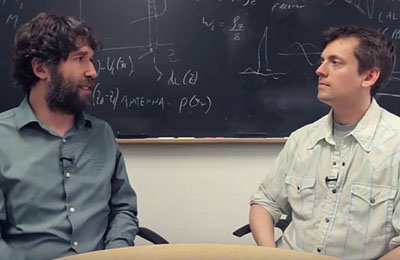 In 2015 scientists working at the Laser Interferometer Gravitational-Wave observatory, or LIGO, detected gravitational waves for the first time. But how did they do it? What is a gravitational wave? And why is confirming something that Albert Einstein predicted a hundred years ago one of the greatest scientific achievements of the past century? Read more >> Related Links: KICP Members: Ben Farr; Daniel E. Holz KICP Students: Hsin-Yu Chen; Zoheyr Doctor Scientific projects: Laser Interferometer Gravitational-wave Observatory (LIGO) Have Astronomers Decided Dark Energy Doesn't Exist? Scientific American, October 26, 2016 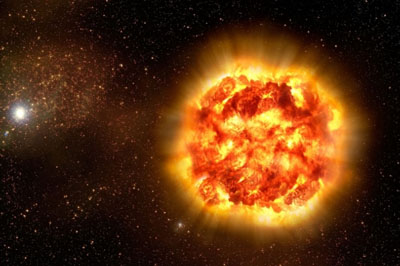 Credit: ESO No, they haven't, although plenty of recent headlines have suggested otherwise. This week, a number of media outlets have put out headlines like "The universe is expanding at an accelerating rate, or is it?" and "The Universe Is Expanding But Not At An Accelerating Rate New Research Debunks Nobel Prize Theory." This excitement is due to a paper just published in Nature's Scientific Reports called "Marginal evidence for cosmic acceleration from Type Ia supernovae," by Nielsen, Guffanti and Sarkar. Once you read the article, however, it's safe to say there is no need to revise our present understanding of the universe. All the paper does is slightly reduce our certainty in what we know - and then only by discarding most of the cosmological data on which our understanding is based. It also ignores important details in the data it does consider. And even if you leave aside these issues, the headlines are wrong anyway. The study concluded that we're now only 99.7 percent sure that the universe is accelerating, which is hardly the same as "it's not accelerating." The initial discovery that the universe is expanding at an accelerating rate was made by two teams of astronomers in 1998 using Type Ia Supernovae as cosmic measuring tools. Supernovae -- exploding stars -- are some of the most powerful blasts in the entire cosmos, roughly equivalent to a billion-billion-billion atomic bombs exploding at once. Type Ia's are a special kind of supernova in that, unlike other supernovae, they all explode with just about the same luminosity every time likely due to a critical mass limit. This similarity means that the differences in their observed brightness are almost entirely based on how far away they are. This makes them ideal for measuring cosmic distances. Furthermore, these objects are relatively common, and they are so bright that we can see them billions of light years away. This shows us how the universe appeared billions of years ago, which we can compare to how it looks today. These supernovae are often called "standard candles" for their consistency, but they're more accurately "standardizable candles," because in practice, their precision and accuracy can be improved still further by accounting for small differences in their explosions by observing how long the explosion takes to unfold and how the color of the supernovae are reddened by dust between them and us. Finding a way to do these corrections robustly was what led to the discovery of the accelerating universe. The recent paper that has generated headlines used a catalog of Type Ia supernovae collected by the community (including us) which has been analyzed numerous times before. But the authors used a different method of implementing the corrections - and we believe this undercuts the accuracy of their results. They assume that the mean properties of supernovae from each of the samples used to measure the expansion history are the same, even though they have been shown to be different and past analyses have accounted for these differences. However, even ignoring these differences, the authors still find that there is roughly a 99.7 percent chance that the universe is accelerating - very different from what the headlines suggest. Furthermore, the overwhelming confidence astronomers have that the universe is expanding faster now than it was billions of years ago is based on much more than just supernova measurements. These include tiny fluctuations in the pattern of relic heat after the Big Bang (i.e., the cosmic microwave background) and the modern day imprint of those fluctuations in the distribution of galaxies around us (called baryon acoustic oscillations). The present study also ignores the presence of a substantial amount of matter in the Universe, confirmed numerous times and ways since the 1970's, further reducing the study confidence. These other data show the universe to be accelerating independently from supernovae. If we combine the other observations with the supernova data, we go from 99.99 percent sure to 99.99999 percent sure. That's pretty sure! We now know that dark energy, which is what we believe causes the expansion of the universe to accelerate, makes up 70 percent of the universe, with matter constituting the rest. The nature of dark energy is still one of the largest mysteries of all of astrophysics. But there has been no active debate about whether dark energy exists and none about whether the universe is accelerating since this picture was cemented a decade ago. There are now many new large surveys, both on the ground and in space, whose top priority over the next two decades is to figure out exactly what this dark energy could be. For now, we have to continue to improve our measurements and question our assumptions. While this recent paper does not disprove any theories, it is still good for everyone to pause for a second and remember how big the questions are that we are asking, how we reached the conclusions we have to date and how seriously we need to test each building block of our understanding. Dan Scolnic and Adam G. Riess Dan Scolnic is a Hubble and KICP Fellow at The Kavli Institute For Cosmological Physics at The University of Chicago. He works on multiple surveys, including The Dark Energy Survey, Pan-STARRS, Foundation and WFIRST, to use Type Ia Supernovae to measure dark energy. Adam G. Riess is an astrophysicist at Johns Hopkins University and the Space Telescope Science Institute. His research on distant supernovae revealed that the expansion of the universe is accelerating, a discovery for which he shared the 2011 Nobel Prize in Physics. Read more >> Related Links: KICP Members: Daniel M. Scolnic |





 Overview
Overview